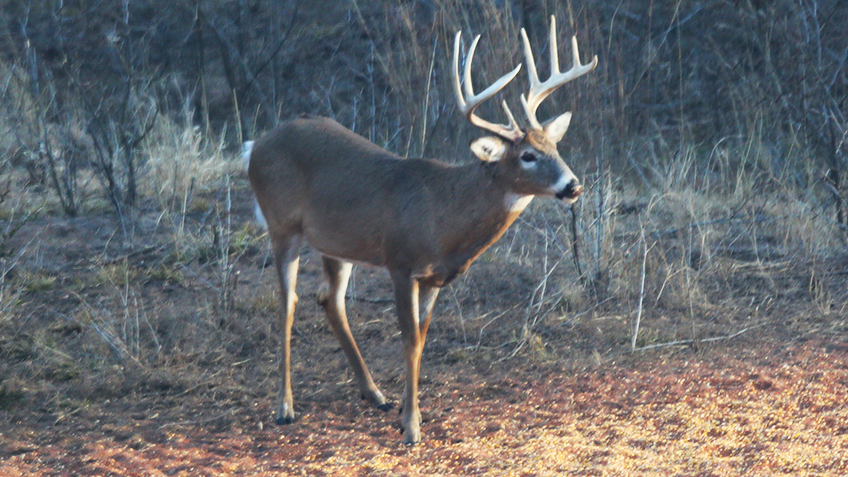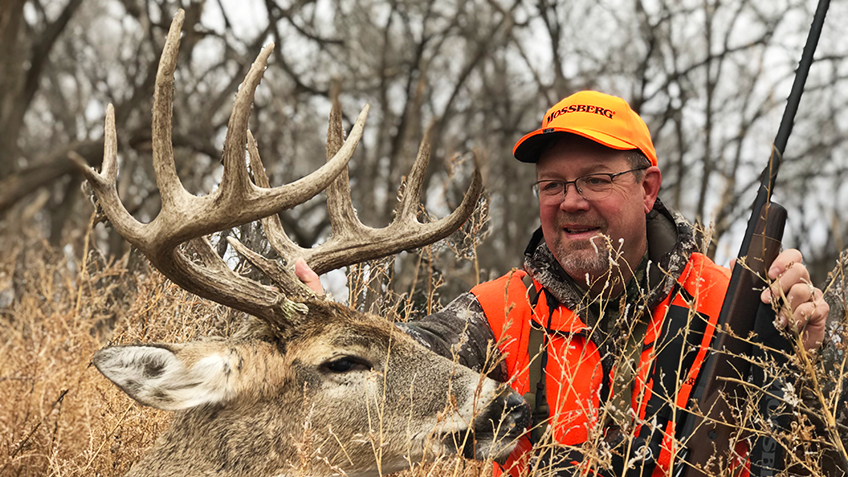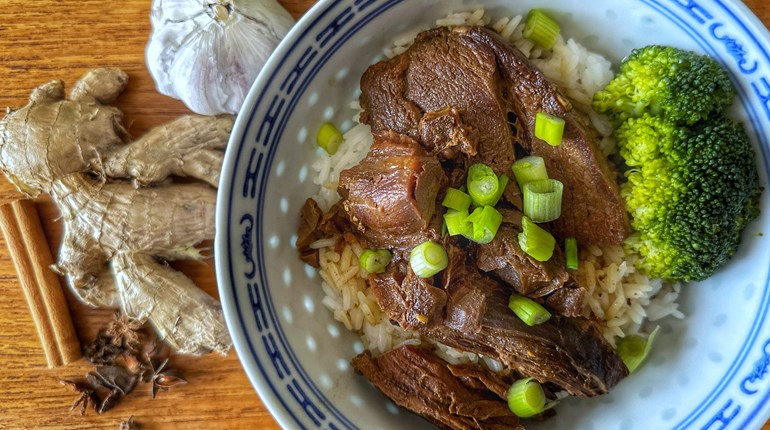
Every whitetail hunter dreams of putting their tag on a trophy-class buck, and if you judge by numbers, can you confidently score the animal on the hoof?
I recently hunted with Tall Tine Outfitters in Kansas, where owner and operator Ted Jaycox has been managing the land and deer for over two decades. Kansas is well known for big whitetails, but to reach full potential, animals need to be given a chance to grow to full maturity. Ted has a camp policy of only shooting 150-class deer or bigger. To help maintain his policy, there is a financial penalty for hunters who harvest a buck scoring less than the 150 minimum. Now, we all know hunters are great storytellers, and most overestimate or exaggerate the real score of a deer when calibrated with a measuring tape.

When your pride and pocketbook are on the line, could you score a 150-class deer properly and confidently if it walked out in front of you?
History of Scoring Antlers
It all started to help save North America’s vanishing big-game population. Trophy measuring has a deep-rooted conservation history dating back to 1887 when a group of concerned individuals—including soon-to-be U.S. president Theodore Roosevelt—established the Boone and Crockett Club. Their goal was to promote the tradition of hunting, and at the same time, conserve habitat and wildlife.
The conservation-minded group established an official measurement and scoring system for dwindling big-game species; the scientific community soon recognized the Boone and Crockett scoring system as an effective way to track the success of conservation efforts.

That was 131 years ago—North America’s big game have largely since recovered—but sportsmen still use the B&C scoring system for antlers, horns and skulls. It’s become the standard, or base, for several record keepers, including the Longhunter Society, which collects and maintains records for trophies harvested with a muzzleloader. The Pope and Young Club, which recognizes trophies taken with a bow and arrow, also uses B&C criteria for determining net scores, and most provinces have an official record keeper and scoring scheme based on the B&C system.
For antlers, B&C looks at a combination of mass and length measurements, as well as the symmetry between the left and right antlers. To field judge your trophy whitetail, here’s how the B&C system can help you determine if you have a wall-hanger in your sights.
White-tailed Deer
To score typical whitetail antlers, measurements include the inside spread between the main beams, the length of the main beams, the distance between the tips of the main beams and the widest outside distance between the antlers (see diagram). The total number of tines and their lengths are also considered, while the overall mass is determined by measuring the circumference of each main beam between the points, and between the burr and the first point.

Scores are then determined for both the right and left antlers to generate an overall gross score, with the differences in measurements between the two antlers deducted to come up with a final score. But how can you quickly tell if a buck is a keeper before you squeeze the trigger?
Beam Me Up
Main beam lengths are a huge consideration—they can provide 30 percent of the overall score for a trophy-class buck. When a buck is viewed in profile, you can tell if it has a long main beam if the tip extends to the end, or past, the deer’s nose.
An Ear’s Width
A wide spread between antlers also indicates long beams, with a trophy-caliber deer requiring an outside spread of at least 20 inches. Since the tips of a mature buck’s ears are about 18 inches apart, look for a spread that reaches beyond the ears.

Points
As for the number of points, it’s rare for a deer to make the record book with fewer than four on each antler, along with the tip of the main beam. However, Ted has a monstrous buck mounted at the lodge that sports long main beams and just three points per side, which most hunters would never think twice about taking. The big three-point does make the camp minimum.
For B&C, the tines must be evenly matched, measuring a minimum of 10 inches in length starting with the first point after the brow on each antler. When you see a trophy-class buck, you usually know it right away—the antlers will look extremely tall above the ears, with the tines lined up like pickets in a fence. Because Ted only uses a gross score for a deer, symmetry isn’t as important as total inches on both sides.
Mass
The mass of the antlers, which can provide 20 to 25 percent of the total score, is often hard to judge. Look for a thick main beam that stands out and catches a lot of light. We’ve all seen photos of deer with good mass—the weight immediately catches your eye. A heavy beam is a good indication of a mature buck. Young deer tend to be spindlier and don’t carry as much weight.
Ted’s Guidelines
Ted, who has some good guidelines for hunters to follow to be successful, says, “An average buck’s frame—inside spread, main beam length times two, and eight mass measurements—average 90 to 95 inches. So, to be safe, a buck needs to have 60 inches of tine length. I tell hunters that if they can count 30 inches of tine length on one side, and if the buck is fairly symmetrical, then it should make the 150-inch minimum. I also tell them that if the buck has above average mass, width or beam length, then the number of inches of tine length can be reduced. This has worked well, and I can only think of one or two occasions out of hundreds of bucks taken that this quick score method has failed.”

Wall of Fame
It also helps that Ted has a comfy lodge with several outstanding deer trophies on the wall. The interesting part is that each buck is extremely different. There is a monster four-point, another with incredible width, another with antlers that are narrow but tall, and all make his minimum score for harvest. Seeing all the variations in antlers that make a 150-inch (or bigger) deer allows hunters to see up-close what they’re looking for in the field. Let’s face it; if you pay for a good hunt and want to take a trophy-class buck, then you need to understand how to score a deer and judge its age accurately.
Maturity
Body language and development is a big help when looking for a mature deer. An older buck will have a swayed back, sagging belly and dominant attitude. I’ve always used antler bases as a good indicator of age; knurly, burled, growing close together, heavy and large are all good base indicators that you’re looking at an old mature buck. Regardless, there are bound to be a few mistakes made when it comes to judging a 150-class trophy buck. The basic rule is, don’t shoot if you aren’t sure.

No Pressure
I sat in a high treestand and watched dozens of deer chasing back and forth along a creek bottom. The rut was in full swing, and after three hours of deer cycling in and out of view, a big ten-point with stickers came into view. Ted had shown me pictures of the buck on his trail camera, and I knew with confidence the deer would score at least 150. A single, well-placed shot from my Mossberg Patriot Revere in 6.5 Creedmoor anchored the deer just 90 yards from where I sat. It was a thrilling moment and one of the best whitetails I’ve taken in the last decade.
For more information, complete instructions, score sheets and online scoring calculators for North American big-game animals, visit the B&C website at boone-crockett.org.




































